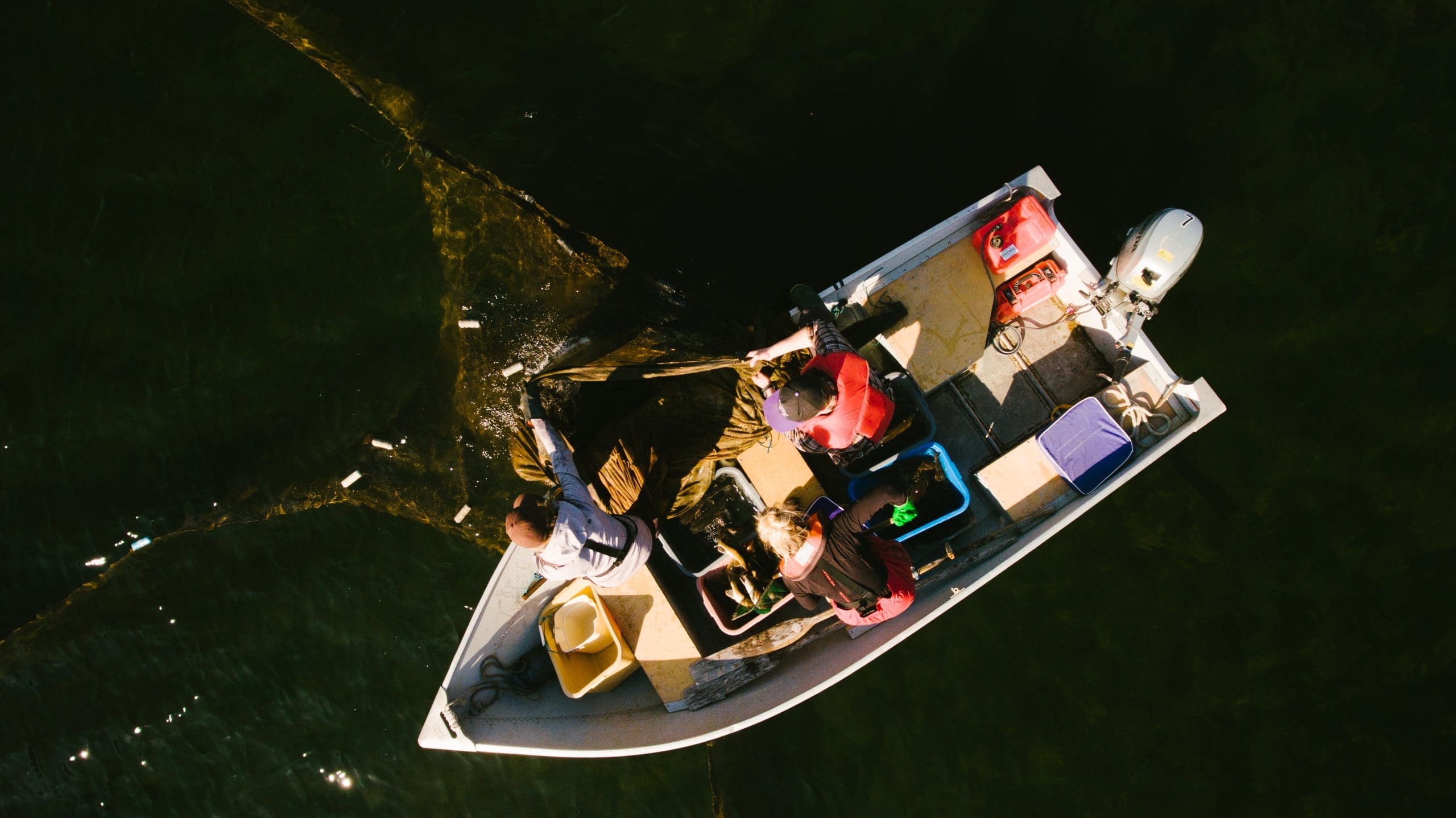Visit the Lakes
Planning on visiting the world’s freshwater laboratory?
Here is where you can find all the important information you need about our lakes, facilities, and tours.
IISD Experimental Lakes Area
IISD Experimental Lakes Area is the world’s freshwater laboratory—a natural research laboratory made up of 58 small lakes and their watersheds.
As one of the world’s most influential freshwater research facilities, we conduct experiments on real lakes and ecosystems—one of the only places in the world you can do this. Over the last 5 decades, we have conducted research projects to explore the impacts of—and solutions to—algal blooms, climate change, agricultural runoff, contaminants such as mercury and estrogen, oil spills, and a growing list of threats to freshwater supplies.
The IISD Experimental Lakes Area field station is on the traditional land of the Anishinaabe Nation in Treaty 3 territory and the homeland of the Métis Nation. This land is in a sparsely populated area of northwestern Ontario in Canada, approximately 300 km east of Winnipeg, Manitoba and 100 km west of Dryden, Ontario.
IISD-ELA is basically the International Space Station of lake science. It's the only place in the universe where researchers can carry out a certain type of science, so scientists from across the globe flock there to carry out one-of-a-kind research.
David J. Ruck, President/Producer, Great Lakes Outreach Media
What does the site look like, and what is it like to work there?
The IISD Experimental Lakes Area research facility is located down a 30-km beautiful and bumpy gravel road. As you enter the camp, first you will see our workshop where our facilities manager works to keep our motorized equipment in working order. Next, you will see the fish laboratory and the chemistry laboratory. The chemistry laboratory building also provides space for offices and laboratory benches to house visiting researchers and the Hydro-limnology, Toxicology, Zooplankton, and Education and Outreach teams. On the other side of camp, Hungry Hall serves as both a dining hall and group-use area for seminars, meetings, and just plain old relaxing. Surrounding Hungry Hall and the laboratories are several residences for staff, students, and visitors, including the Vallentyne and Johnson Residences. The site also has smaller cabin-like residences for scientists with families in the part of camp we fondly call Suburbia. All together, we can comfortably accommodate about 55 people.
The IISD Experimental Lakes Area research facility is located on the shores of two of 58 experimental lakes, Lakes 239 and 240. These are two significant lakes, as Lake 239 serves as a Long-Term Ecological Research lake, and Lake 240 serves as a reference lake for our ongoing METAALICUS study.
After working hours, families, staff, and students relax at the beach on the shore of Lake 239, enjoy the beach volleyball court, canoe, and prepare for the annual talent show, Variety Night, at the end of the season.
Even in winter, the science doesn’t stop! Our facility manager lives at camp year-round, and our scientists visit monthly to perform winter sampling tasks, such as collecting temperature data or flow data. And, if we didn’t already collect enough data, each morning, an individual at camp will collect data and perform maintenance tasks at the Canadian Air and Precipitation Monitoring Network meteorological site. This station was established in 1969 by the federal government and has been voluntarily run by IISD-ELA staff ever since.
